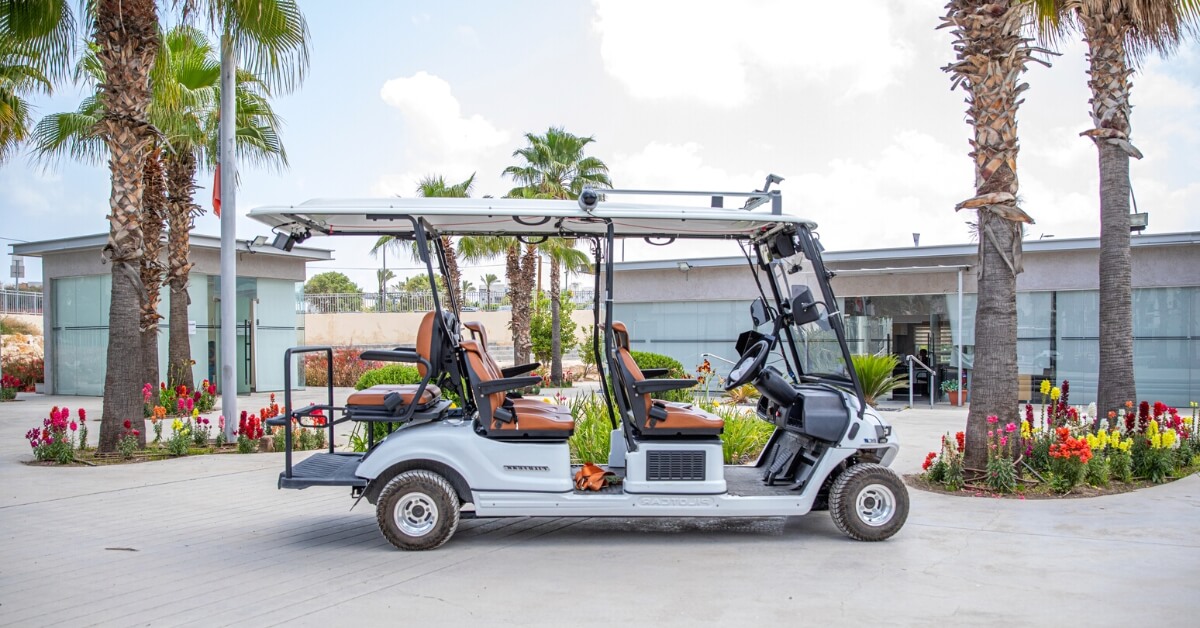
We’re on the verge of a major global transformation, with the advent of autonomous transport.
While this exciting new dawn has been promised for a while, it seems that we’re no closer to experiencing autonomous transport in our day-to-day lives.
In this article, we’ll look at why autonomous transport has been so difficult to mainstream, and where ordinary people will most likely be experiencing autonomous transport in the very near future.
Autonomous transport: a primer
Autonomous transport, also referred to as self-driving vehicles, are vehicles that are capable of navigating without human intervention. They are equipped with a range of sensors and technologies, including GPS, radar, lidar and cameras, that allow them to detect and respond to their environment.
Autonomous transport is set to revolutionize the way we travel and transport goods. It has the potential to reduce accidents, increase efficiency, and improve the overall quality of life.
Let’s start with the benefits autonomous transport provides.
Benefits of autonomous transport
There are numerous benefits to autonomous transport, including:
Reduced accidents
According to the World Health Organization, road traffic accidents are responsible for over 1.3 million deaths per year. Autonomous transport has the potential to reduce accidents by eliminating human error, which is the leading cause of accidents.
Increased efficiency
Autonomous transport can travel at a constant speed, maintain a safe distance from other vehicles, and make more efficient use of space. This can reduce traffic congestion and improve the overall flow of traffic.
In non-urban areas (for example a resort or industrial complex), autonomous transport can choose the best routes to move people and equipment, ensuring that supply of and demand for transport are evenly matched. Usage can be predicted, and business leaders can make informed decisions based on this data.
Improved accessibility
Autonomous transport can provide transportation to people who are unable to drive, such as the elderly or disabled. It can also provide transportation to areas that are currently underserved by public transport.
It also allows people to be more productive: if you don’t have to be focused on the road ahead, you can spend the time on high-impact activities, or just relax with your loved ones.
Environmental benefits
Autonomous transport can reduce emissions by optimizing fuel consumption and reducing congestion. This can have a significant impact on the environment and help mitigate climate change. This is particularly true when it comes to battery-powered autonomous transport.
Challenges of autonomous transport
While there are many benefits to autonomous transport, there are also several challenges that need to be addressed. Understanding these challenges is critical to understanding why we (still!) do not see autonomous transport on our streets today.
Safety
Ensuring the safety of autonomous transport is the most significant challenge facing the industry. While autonomous transport has the potential to reduce accidents, it also presents new risks, such as cyber attacks and software malfunctions. There is also the issue of mixed vehicle types – some being autonomous, and some not. This raises even more challenges.
Infrastructure
The success of autonomous transport will depend on the development of a supportive infrastructure, including intelligent traffic management systems and charging networks.
Regulation
The regulation of autonomous transport is a complex issue that requires collaboration between government agencies, industry, and other stakeholders. This includes addressing liability issues and ensuring that autonomous transport meets safety standards. This is one of the biggest issues holding back autonomous transport, one that does not look like it will be completely solved any time soon.
Public perception
The success of autonomous transport will depend on public acceptance. There is currently a lack of trust in the technology, and concerns over safety and privacy need to be addressed.
The future of autonomous transport
Despite the challenges, the future of autonomous transport looks promising. According to a report by the International Energy Agency, autonomous transport could account for up to 40% of passenger kilometers by 2040. This represents a significant shift in the way we travel and transport goods.
But how do we solve the challenges that keep autonomous transport tantalizing close, yet constantly out of reach?
That’s where Carteav comes in. Carteav’s novel solution is to provide low-speed autonomous transport in managed areas. Think resorts, golf courses, enclosed suburban areas (gated communities), parks, retirement communities, industrial sites, educational institutions, and the like.
The benefits and ROI are immediate:
Driver Cost: autonomous transport dramatically reduces driver cost, simplifies management, and guarantees 24/7 availability.
Safety: far fewer accidents lower maintenance cost expenses by more than 50%, decrease insurance costs and create a safer environment.
Sharing: improve availability and increase efficiency with shorter service cycles brought about through sharing.
Service: offer exciting services such as scheduled reservation, estimated time of arrival, and in-cart point of interest selection.
Carteav’s solution is already being used in real-world applications (see videos here!), where it is used as an end-to-end system complete with Fleet manager, Autonomous wireless charging, and a full Reservation system including a mobile app.
Conclusion
Autonomous transport represents a significant shift in the way we travel and transport goods. While there are many benefits to the technology, there are also several challenges that need to be addressed. Ensuring the safety of autonomous transport is the most significant challenge facing the industry, and the success of the technology will depend on public acceptance. This is why low-speed, managed area autonomous transport is the real future of autonomous transport, and is the way you’re most likely to get to experience autonomous transport.
Despite the challenges, the future of autonomous transport looks promising, especially when it comes to Carteav’s vision, and we can expect to see significant advancements in the coming years. As the technology becomes more widely accepted and integrated into our daily lives, we will likely see a reduction in accidents, improved efficiency, and increased accessibility. The development of autonomous transport is an exciting opportunity for the transportation industry to evolve and meet the needs of a changing world. As we move towards a more sustainable and connected future, autonomous transport will play a crucial role in shaping the way we travel and transport goods.
To learn more about Carteav’s revolutionary approach, get in touch.
